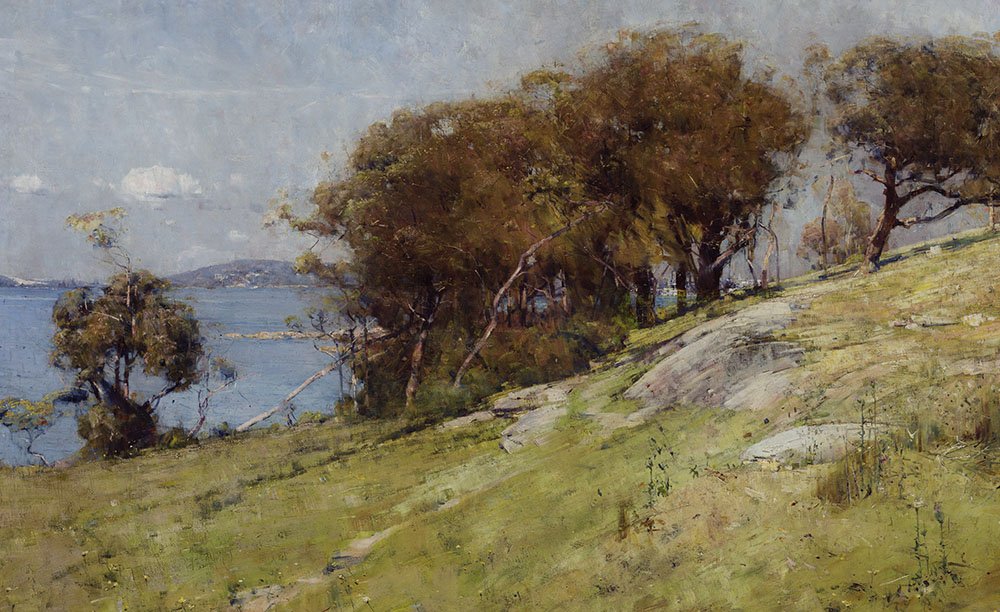"One of the signs of a great painting is that it speaks to us in our moment, as well as the moment in which it was made, and Streeton does that,” Wayne Tunnicliffe, Art Gallery of New South Wales
Arthur Streeton | A Life
Using the framework of the Streeton retrospective at the Art Gallery of New South Wales in 2020, Streeton – A Life explores the key moments in Arthur Streeton’s artistic journey.
Streeton (1867-1943) was one of the key artists of the late nineteenth century Australian Impressionism movement along with Charles Conder, Frederick McCubbin, Tom Roberts and Jane Sutherland. Often referred to as the Heidelberg school, the artists initially worked together at artists’ camps around Melbourne seeking to capture the distinctly Australian light.
In 1890, Streeton and Roberts joined one of the camps at Sirius Cove on Sydney Harbour.
Arthur Streeton, From McMahon’s Point-Fare One Penny 1890. Collection National Gallery of Australia, Canberra
A central theme of the film is Streeton’s environmental activism which began with his opposition to the proposed mining of Sydney Harbour in the 1890s.
Arthur Streeton, Cremorne Pastoral 1895. Collection Art Gallery of NSW, Sydney
“Sydney is an artists’ city – glorious – Roberts and I go to Mossman’s Bay and pull through the lazy green water & then lunch under the shade in the open air, eggs, meat, cheese & two big bottles of claret grown in Australia – The little Bay seemed all asleep & so very peaceful.” Arthur Streeton 1890
Arthur Streeton at Camp Mosman 1891-1983, State Library of New South Wales, Sydney
"Streeton is one of many people who opposes the mine. So he writes a letter to the press where he casts the mine as a form of vandalism. He is appalled by the thought of Cremorne being sacrificed. That is the first time an Australian artist publicly opposes a major resource development. He celebrates Cremorne in his painting Cremorne Pastoral which is immediately acquired by the Art Gallery of New South Wales. That picture was read at the time as a celebration of a landscape which looked as if it was going to be destroyed and blighted.” Tim Bonyhady
Arthur Streeton, Still glides the stream and shall forever glide 1890. Collection Art Gallery of NSW, Sydney
Later in his life, Streeton was outspoken about the logging of old growth forests. The filmmakers were granted access to film at Streeton’s house in the Dandenongs where the garden was the inspiration for much of the artist’s later work.
Arthur Streeton’s house at Olinda, Dandenongs, Victoria
Narrator/Mark Lee, Director and producer/Catherine Hunter, Cinematographer and editor/Bruce Inglis. Produced in association with the Art Gallery of New South Wales in conjunction with the exhibition Streeton curated by Wayne Tunnicliffe. Duration 35 minutes. First broadcast on the ABC Landline program in 2020 and Sky Arts New Zealand.© 2020 Catherine Hunter Productions.
©Catherine Hunter Productions 2024






